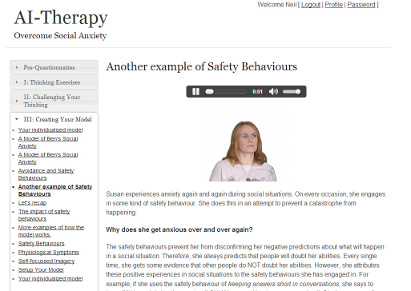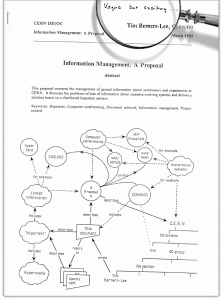There’s definitely, definitely, definitely no logic to human behavior
-BjÖrk
I tend to agree with Björk (my fellow Icelander) — especially when it comes to “common sense” approaches to self help for improving anxiety or mood issues.
Despite having about 1000 trials supporting the efficacy of cognitive behaviour therapy (CBT) in the long term, the average Jane or Joe still has not heard about CBT. CBT has consistently outperformed medication when you look at long term benefits. What you learn through the CBT sticks with you for life! First, it addresses the root of the anxiety by determining what is keeping it going in everyday life. Next, it tackles the underlying cause using experiments and exercises. With CBT you develop strategies that you can use for the rest of your life.
One of the most common ways for individuals to deal with symptoms of anxiety and depression is to purchase self help programs (books, e-books, CD/MP3s audio series, etc.). The quality of these programs varies widely. There are some very good programs out there written by experienced and qualified professionals. Some of the best programs walk the client through the principles behind CBT.
Unfortunately, for every high-quality program, there are many more poor quality programs created by “self-help gurus”. Sometimes these gurus are well meaning people who have managed to cure their own problems, and would sincerely like to help others. Other times they are created by people simply looking for a quick buck. The problem is that some techniques for dealing with mental health issues are counter-intuitive, so without proper training, self-help authors can actually make problems worse. Let’s look at an example.
A typical title for self help books might be: Successful small talk: Learn to be open, interesting and intelligent. The purpose is to advise individuals on how to better manage their impressions on other people in social situations. If only human behavior was that simple! It would be great if we could sit down and read a book that would transform us into interesting and intelligent super-humans. Unfortunately, many of the recommended strategies (e.g. rehearse what you say in advance, make constant eye contact, etc.) can actually maintain anxiety in the long run. I mentioned these processes in my last blog, and referred to them as safety behaviors.
For social anxiety, people often believe that their safety behaviors help prevent negative evaluation in social situations. However, they actually might be preventing them from learning the truth. For example, assume that I deal with my social anxiety by only telling people about the positive aspects of my life (like many of us do on Facebook!). Perhaps I believe that this will stop them from judging me negatively. The problem is that if I never test this hypothesis, I am never comfortable being myself. What is wrong with this?
Firstly, it is unrealistic. People are people, and everyone has their ups and downs. By putting this extra pressure on myself to always look perfect, I might start avoiding social situations, reinforcing the anxiety. Social situations become extremely stressful.
Secondly, this type of safety behavior might make people judge me negatively. For example, people may feel resentful about my “perpetually success”, or suspect that I’m not telling the whole truth. Also, this maintains my social anxiety in the long run since I can never test if people approve of me for who I really am!
On the surface, common sense advice like “people don’t want to hear about your problems — focus on the positive” sounds great. However, as we’ve just seen this isn’t the case. Unfortunately, many self-help books are full of these sorts of recommendations.
There are some great self help books or programs out there. My advice is that if you do follow a self-help program make sure that it is (1) is created by a qualified professional with training in psychology/psychiatry, (2) uses CBT to tackle the core problems, and (3) does not promote behaviors that might end up making the problem worse.

Fjola Helgadottir, PhD, MClinPsych, is a clinical psychologist, a senior research clinician at the University of Oxford, and is a co-creator of AI-Therapy.com, an online CBT treatment program for overcoming social anxiety,

 A “computer psychologist” has been developed for
A “computer psychologist” has been developed for 